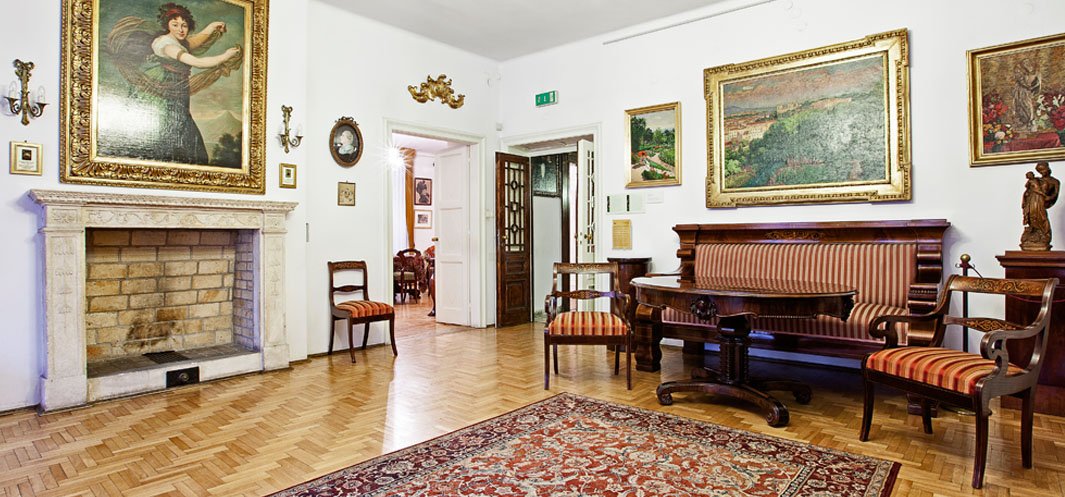New acquisitions at the Mehoffer House

It was executed, at his personal request, by Franciszek Białkowski and Władysław Skibiński’s stained-glass company. From 1905, this work and a replica of another stained-glass window from Opava, entitled Caritas, were part of the furnishings of the Mehoffers’ flats.
Faith-Hope-Love became the Museum’s possession in April 2015 thanks to financial support from the Ministry of Culture and National Heritage within the Grant Scheme for 2015 Collections - priority 4 – Museum Collections.
In 1901, Józef Mehoffer designed six stained-glass windows for the neo-Gothic sepulchral chapel of the Grauer family in Opava. They constitute a whole in terms of idea and style, and the genesis of their iconographic programme is associated with the death of the merchant Ignacy Grauer’s wife – Regina. This fact is evoked in the Faith-Hope-Love composition in the depiction of a dead woman, as if frozen, resembling a tomb sculpture. The central motif of the Opava stained-glass windows is the idea of the immortal soul, which is combined with the idea of mercy – love for God and neighbour. In the composition Faith-Hope-Love, drawing on old iconographic motifs of Christian art, Józef Mehoffer depicted the passage of the human soul to eternity. It is symbolised by a naked, winged child heading from above the dead woman towards the representations of three theological virtues standing at the door of heaven. The decorative character of this work and an attempt at stylisation are typical of the "Art around 1900."
At present, the Grauers’ chapel in Opava is decorated with the copies of Mehoffer’s stained-glass windows, the originals (except for one piece) being transferred to the Museum of the Silesian Land in Opava, Moravia (Czech Republic).
Description: Beata Studziżba-Kubalska
Purchase subsidised by the Ministry of Culture and National Heritage + LOGO MKiDN

